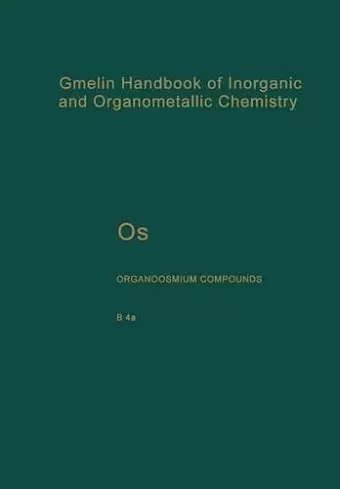Os Organoosmium Compounds
Karin Greiner author Petra Olms-Keller author Cornelia Weber editor J Füssel editor B Kalbskopf editor H-J Richter-Ditten editor
Format:Paperback
Publisher:Springer-Verlag Berlin and Heidelberg GmbH & Co. KG
Published:3rd Oct '13
Currently unavailable, our supplier has not provided us a restock date

Springer Book Archives
The GmeLin series "Organometallic Compounds" comprises compounds containing at least one carbon-to-metal bond (except cyano compounds, which are considered inorganic). It includes all information in scientific journals, but patents, conference reports, and disserta- tions generally were not reviewed. The volumes published so far are listed on p. V/' Organometallic compounds are classified according to their nuclearity and the bonding mode of the organic ligands nL. Nuclearity means the number of atoms of the title metal in the formula unit disregarding any additional metals that may be present. The term nL designates a ligand bonded by n carbon atoms to one or different atoms of the title metal. As usual, a-bonded 1 L ligands are designated by R. Inorganic ligands (Le., ligands bonded exclusively by elements other than carbon) are generally designated by 0 or X. 0 means donor ligands such as pyridine or phosphanes; m-electron donors are specified by mO. X is reserved for negatively charged ligands or other one-electron donors such as halogens or SnR; bridging X ligands may donate one 3 2 2 2 (~-H), three (~-Cl, ~-OR), or five (~3-1) electrons. Terms such as lL_ 0, 20-X, or 20_ 0_ 0 may be used for multidentate ligands. Heterometals are often designated by M, and bridging elements, bridging groups, or nonmetallic cluster constituents by E. The symbols 1] and ~ follow the IUPAC nomenclature.
ISBN: 9783662075418
Dimensions: unknown
Weight: unknown
179 pages
8th ed. 1995. Softcover reprint of the original 8th ed. 1995